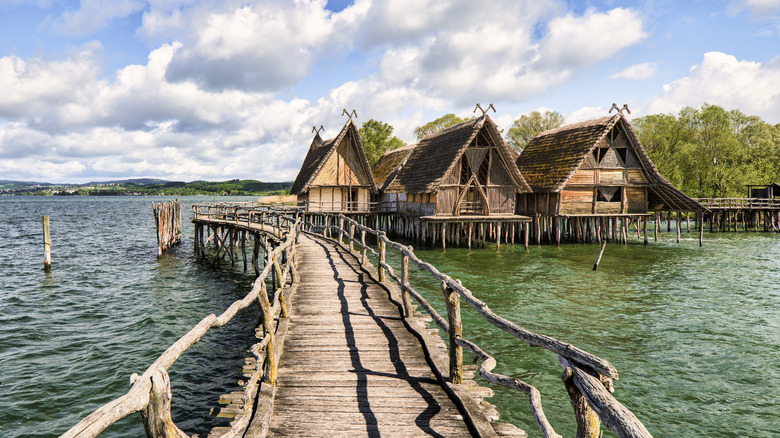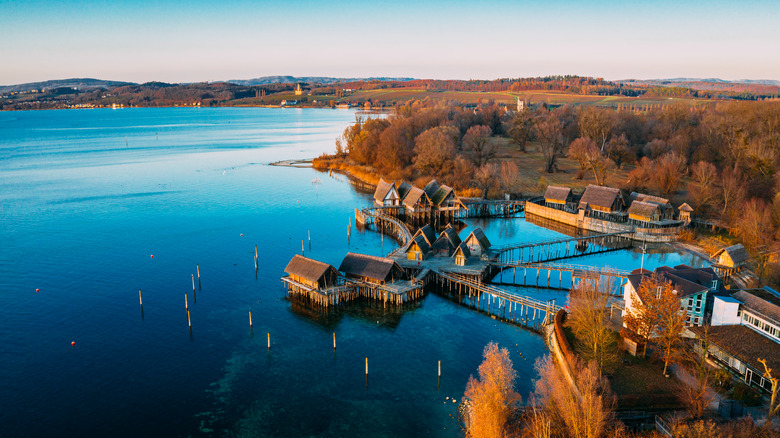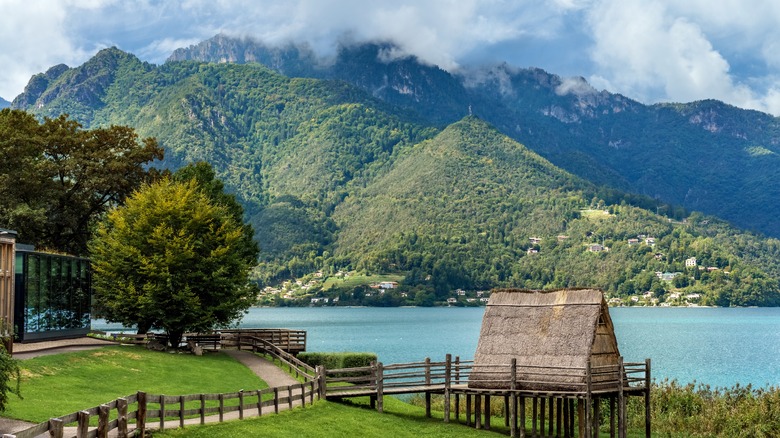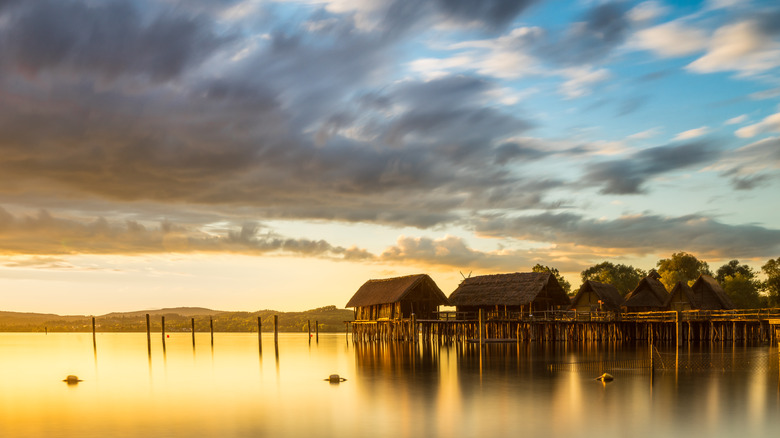Scattered across the European continent are magnificent historic sites deemed culturally significant — from Rome’s Colosseum to the Acropolis of Athens, or even this world-famous villa (and UNESCO World Heritage Site) on Lake Como. But if you look beyond these popular landmarks, you’ll find another site that, while one of the least visited by tourists, is still remarkably impressive. It’s also a place that connects us to some of our earliest human origins. Throughout the valleys of the Alps, archaeologists have excavated clusters of wooden posts rising from lakebeds and wetlands. Known as pile dwellings, these are the remains of thatched log houses built on stilts, some of which date to almost 7,000 years ago and are evidence of prehistoric settlements.
More than a hundred pile dwelling sites have been discovered in six countries across Europe, with the majority of them found in Switzerland, Germany, and France. Collectively, they were declared heritage sites in 2011, and while the stilt posts may not seem like much, they’re a truly underrated glimpse into the daily lives of our earliest ancestors. With further artifacts such as pottery and textiles uncovered around the pile dwellings, archaeologists have gained a rare peek into the development of early European agrarian societies from the Neolithic and Bronze Ages.
On the shores of Lake Constance in Germany, the Pfahlbauten Pile Dwelling Museum is an incredible attraction that has reconstructed what these stilt house villages must once have looked like, plus exhibits of the original artifacts found there. Similarly, at the Lake Ledro Pile Dwelling Museum in Northern Italy, you can wander through the recreation of a Bronze Age pile dwelling village from around 2,000 B.C. For a truly memorable visit to the Alps, take a break from the dramatic mountain scenery to visit this hidden ancient wonder.
Visit the Pfahlbauten Pile Dwelling Museum at Lake Constance, Germany
Situated just beyond the foothills of the Bavarian Alps in Southern Germany, the Pfahlbauten Pile Dwelling Museum near the town of Uhldingen on Lake Constance takes you on a journey through a Neolithic civilization. It’s the oldest open-air museum in Germany, and the pile dwellings discovered here date to around 900 B.C., which is about 3,000 years ago. Nine different pile dwelling sites were found around Lake Constance, and the museum has reconstructed 23 of these stilt houses in a cluster of villages that capture the essence of how Germany’s ancient societies once lived.
The museum’s visitor center, called the New Museum, serves as the introduction to the site, where guided tours in English can be booked. Around 1,000 original artifacts uncovered from Lake Constance are displayed here, rounded out by dynamic multimedia presentations that reveal the underwater remains of the original pile dwellings and explain how archaeologists uncovered them. The outdoor portion of the museum is where you can explore the reconstructed pile dwellings. Raised wooden footbridges over the lake connect each small group of thatched houses, and as you wander around, you’ll see dioramas of daily life with dressed mannequins, the workshops of early tradesmen like potters and bakers, and the palisades that these early peoples built to keep out intruders and wild animals. One of the villages even displays a Neolithic wheel.
Although the Pfahlbauten Pile Dwelling Museum is in Germany, the nearest major city is actually in Zurich, Switzerland, which is about an hour and a half away by car. If you’re planning a vacation in the Swiss Alps, consider taking a day trip to the Pile Dwelling Museum before continuing to some of Switzerland’s most iconic destinations, like Lake Lucerne or St. Moritz.
Visit the Lake Ledro Pile Dwelling Museum in Northern Italy
Planning your trip to see the pile dwellings in Germany or Italy
The Pfahlbauten Pile Dwelling Museum near Uhldingen is just under three hours away by car from Munich, so if you want to fly into Germany rather than travel from Zurich, you could rent a car at Munich Airport and drive there. There are also a few great hotels in Uhldingen for overnight stays, like the Landhotel Fischerhaus, a half-timbered chalet with a cozy atmosphere.
To visit the Lake Ledro Museum in Italy, you could fly into Verona’s Valerio Catullo Airport before driving over. A flight into Milan is another alternative, as there are several direct flights (whereas flying to Verona involves at least one connection), and it’s just under three hours away by car. If you want to stay on Lake Ledro, the Residence Palafitte offers multi-room apartments equipped with its own kitchen, plus a balcony overlooking the museum’s stilt village and the Alps beyond. Another charming option is the B&B Ledro, a rustic cottage hotel with gorgeous lake and mountain views.
The summer months between May and August will be the best time to visit either of the two museums. During January and February, the Lake Ledro Museum is completely closed, while the Phfalbauten Museum only admits individual visitors for a one-hour guided tour. Also, as both museums involve spending most of your time wandering outside, the warmer summer weather will mean a more pleasurable stay. Renting a car is going to be the most convenient way to get there, as the museums are located far enough away from major cities that taking public transport involves multiple changes and takes almost twice the time. But whether you’re going through Switzerland, Germany, or Italy, a trip to this ancient heritage site will be an unforgettable glimpse into the past.





